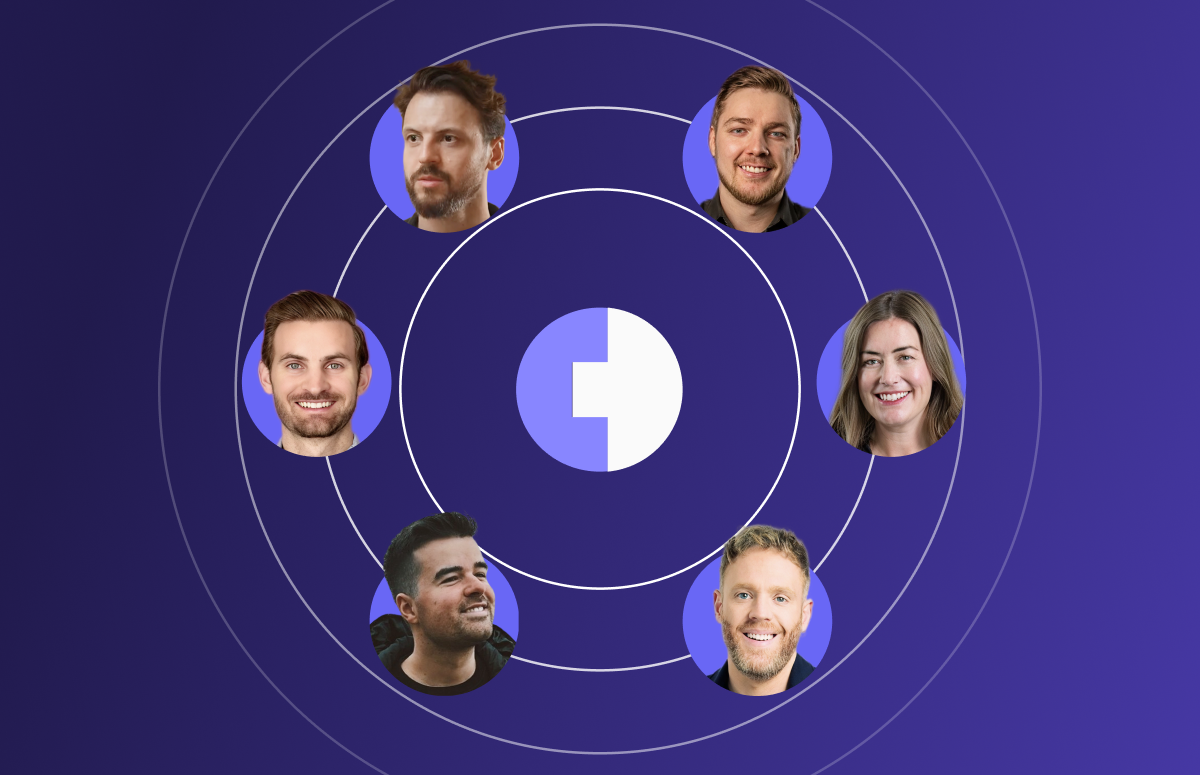How to Create an Ideal Customer Profile (ICP) With Template
Ideal customer profile FAQs:
How do you turn your B2B marketing team into a revenue-generating powerhouse?
The answer is simple: define your ideal customer profile!
By doing this, you can work out who your perfect buyer is and then bring them to life. If you don’t know your target audience, you won’t know how to position your product or service in a way that appeals to them.
In this guide, we’ll tell you everything you need to know about ICP (Ideal Customer Profile), including:
- What ICP stands for.
- Why it’s essential for your account-based marketing strategy.
- How marketers can identify ideal buyers and build a customer profile.
- How your ideal customer profile definition can help you align sales and marketing.
- Examples of customer profiles to help you create your own, plus a downloadable template!
Marketing managers, let’s get started.
Prefer to watch a video? Alice de Courcy, CMO at Cognism, Charles Crnoevich, Vice President - Partnerships & BD at Bombora, and Matt Gower, GM + Strategic Partnerships EMEA at Bombora, discuss defining your ideal customer profile (ICP) in this two-minute explainer 👇
What’s an ideal customer profile (ICP)?
An ideal customer profile (ICP) is a description of the perfect company or customer you want to target for your business. Companies that fit your ICP are vital for revenue generation as they are more likely to buy, stay loyal to your product, and refer you to others.
These profiles should consist of buyers who will benefit from your product or service while giving you enough value in return to make your business profitable. This ROI could include referrals, buyer insights, testimonials, and revenue.
In most cases, your ideal customer should be able to use your product to boost their bottom line as well as:
- Reduce costs.
- Drive efficiency.
- Improve the productivity/well-being of staff.
Why should an ICP be part of your marketing strategy?
Knowing who your most valuable customers are isn’t enough. By building an ideal customer profile, you can turn your marketing team into a streamlined lead generation machine.
Here are seven reasons why your B2B business needs an ICP:
- Produce high-quality target lists for MDRs and SDRs.
- High-quality qualified leads that are more likely to convert.
- Better targeted, more effective SaaS marketing campaigns and faster sales cycles.
- ABM campaigns that reach potential buyers at the perfect time.
- Highly personalised value-driven content shared throughout the B2B marketing funnel.
- Increased customer lifetime value (CLV).
- Better brand awareness.
- Consistently beat targets and grow revenue!
With this said, the overarching goal of defining an ideal customer profile for your business is to align your sales and marketing teams.
According to Marketo research, when sales and marketing teams work together, companies achieve 36% higher customer retention rates and 38% higher sales win rates, leading to a 208% growth in marketing-generated revenue.
Is there a difference between an ideal customer profile and a buyer persona?
Don’t mix up your ICP and your buyer personas. They’re different things.
A buyer persona represents your ideal customers based on psychological factors and marketing data, such as demographics, pain points, goals, needs, and motivators.
Your ICP, on the other hand, isn’t just a target customer – it’s your perfect customer – the customer who gets the best value from your product or service.
You should be working with many different buyer personas in your B2B organisation, but there’s only one ICP.
How do you create an ideal customer profile for B2B?
So, how do you build an ideal customer profile?
Easy! All it takes is five steps:
- Identify your super users
- Request an interview
- Analyse the data
- Create your ideal customer profile template
- Refine your findings
Let’s discuss:
1. Identify your super users
Targeted leads come from understanding the buyers you’ve already won.
Start by building a list of your current customers and analysing the data to see who is getting the most value from your product or service.
These are normally B2B companies your sales team has recently upsold to. However, an ideal customer is likely to have six traits:
/Ideal%20Customer%20Profile/ideal-customer-profile-infographic-1-webp.webp?width=672&height=800&name=ideal-customer-profile-infographic-1-webp.webp)
- Industry ICP fit: the industry makes sense for your product and service.
- Profitable & financially able to purchase: potential customers are in similar funding rounds, are set to scale and have the budget to purchase your product or service and continue using it.
- Ready to buy: there’s a need for your product, and you’re certain your company can add value/solve pain points.
- Ability/goals to scale: your buyer showcases the ability to scale or has set plans in place for growth.
- Employee/company size: the average employee count/ company size fits your total addressable market (TAM).
- Geographical fit: your buyer is in a geographical location you sell to.
A good idea is to align with your product team to help narrow your current customer base. Ideally, you want ten super users who share characteristics of your ideal customer profile.
2. Request an interview
Another tactic to understanding your ideal customers is to find out what your best buyers love about you and your product.
How to do this?
Ask them, of course!
Set up a phone call, Zoom, or face-to-face meeting with your ten super users and ask them about their experiences using your product.
The end goal is to discover:
- Their buying processes.
- How they found you.
- Why they purchased.
- How they’re benefitting from your product.
Finding out the answers to these questions can help you determine how to target buyers who might have the same pain points.
At Cognism, we ask the following ideal customer profile questions when interviewing our super users:
- How much research did you undertake before you committed to buying?
- Were there any referrals that influenced your decision to buy?
- How did you first hear about our product or company?
- Who is the buying decision-maker at your business?
- Did the buying decision need to be approved by a buying committee
- Why did you originally choose to purchase our solution?
- What benefits do you get out of using our solution today?
- What are the major pain points your company faces?
- What is the primary problem you needed to solve?
- How does our product solve that problem?
💡 Top tip: When drafting your ICP questionnaire, focus on your potential customers’ pain points – how does your solution solve them?
3. Analyse the data
You’ve conducted your interviews and collected your answers. Now it’s time to find out what it all means and create an ideal customer profile for your business.
Gather the data you’ve collected and look for common attributes.
- Are there any recurring patterns or shared characteristics?
- Is there anything that connects them?
Identify any similarities and use these insights as you move on to the next stage of building your ideal customer profile.
💡 Top tip: To make this process easier, add the super user sales data to your CRM and use it to analyse the data.
4. Create your ideal customer profile template
This is where you combine all the B2B data you’ve collected to create an ideal customer profile framework.
Whatever you do, don’t overcomplicate it.
There are many ICP templates to download when customer profiling (we’re sharing one below), but often enough, a simple spreadsheet or table will work just as well.
If you’re looking for examples of ideal customer profiles, you’ve come to the right section!
Here’s a target audience profile example Cognism used to use:
5. Refine your findings
The ICP process doesn’t end once you have created it. You need to keep refining and improving your marketing and sales ICP to adapt to changes in your audience and your industry.
Here are some ideas for optimising your ideal customer profile:
- Look for feedback - talk to the person who deals with customer feedback in your business. If you’re a tech startup or in SaaS sales, G2 is an excellent resource for customer opinions.
- Examine your website traffic – which pages on your site are generating the most heat? This can help you determine what your ideal customers are currently interested in. Look into where your visitors are coming from and the type of customers you’re attracting. Information like this can help you refine your marketing channel choices.
- Look at your revenue data – which customers have the largest lifetime value? Which customers drive the biggest profits? Look for patterns in your figures that can help you improve your ICP.
- Look for patterns in closed-won deals – are there patterns in your recent successful deals? Are they coming from one particular lead source? How are they entering your sales pipeline? Do you do anything specific during the sales process that boosts your chances of success?
And that’s how you build and refine your B2B sales and marketing target customer profile!
Download your ideal customer profile template
Save time putting together your own ideal customer profile worksheet with our free ICP template. Simply copy and paste it into your chosen editor and go from there 👇
|
(COMPANY NAME) IDEAL CUSTOMER PROFILE |
|
|
Industry / Type of company |
|
|
Location |
|
|
Company Size |
|
|
Budget |
|
|
Buying Process |
|
|
Purchasing decision makers/buying committee |
|
|
Pain Points |
|
|
Business Goals |
|
|
Technologies |
|
|
Attributes |
|
Here’s how you can connect with your ideal customer fit
You’ve defined your ideal buyer. What’s next?
You need to contact the right buyers at the best time, and how better to do that than with Cognism?
Cognism allows you to build authentic connections and break performance records month-on-month with high-quality GDPR-compliant contact, account, and event data.
/CTAs%20(SEO)/cognism-tam-calculator-cta-webp.webp?width=800&height=307&name=cognism-tam-calculator-cta-webp.webp)
/Ideal%20Customer%20Profile/ideal-customer-profile-infographic-2-webp.webp?width=672&height=933&name=ideal-customer-profile-infographic-2-webp.webp)
/CTAs%20(SEO)/CTA%20banner-Ideal%20customers..webp?width=1376&height=528&name=CTA%20banner-Ideal%20customers..webp)
/SMB%20ABM/Blog_Image_How%20SMBs%20Can%20Run%20Enterprise-Level%20ABM%20on%20a%20Lean%20Budget%20%20Resource%20Card.webp)

